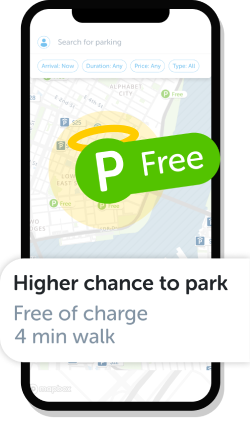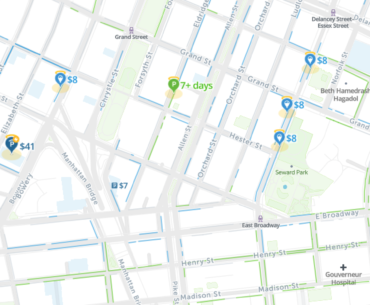Driving a car in in Sydney can be an expensive activity. Parking prices for sure don’t help. With these tips and tricks, you’ll be able to find a free parking spot or two in the CBD area of Sydney!
To find those free street parking spots, here is what you need:
- An understanding of where those spots exist. (Check out this free map!)
- Familiarity with parking rules in the CBD area of Sydney so you’ll know that a free spot is actually free.
Map of Free Parking
SpotAngels is here to help you find free parking in the CBD area of Sydney!
Most of the spots in the CBD area are metered. But some are free. To locate them you can use the SpotAngels map before navigating to your desired area.
The map updates in real-time, so simply type in the address you’re parking near, the time you expect to be there, and your duration. The spots where you can legally park will appear on the map along with their prices. The green spots are the ones that are free of charge!
Pro tip: Some of the metered spots (in blue) might be free of charge as well if you happen to park outside of the metered hours 😉

Sydney Parking Rules:
A good fact to keep in mind about Sydney parking rules: Meters are not suspended on holidays, they are always in effect!
| Public Holiday | Parking Meter Enforcement | Notes |
|---|---|---|
| New Year’s Day | Paid parking | Reduced off-peak rates; check signs for specifics. |
| Australia Day | Paid parking | Off-peak rates apply; some areas may be free, check local signs. |
| Good Friday | Free parking in many areas | Check for enforcement in busy districts or private lots. |
| Easter Monday | Free parking in most areas | As with Good Friday, check specific zones. |
| Anzac Day | Paid parking | Off-peak rates apply; some areas may enforce standard rates. |
| Queen’s Birthday | Paid parking | Reduced rates typically apply; always verify on-site signage. |
| Labor Day | Paid parking | Reduced rates typically apply. |
| Christmas Day | Free parking | Generally free, but always confirm with signage, especially in hotspots. |
| Boxing Day | Free parking in most areas | Similar to Christmas, but busy districts may have enforcement. |
| Bank Holiday | Paid parking | Similar to other public holidays; reduced rates generally apply. |
To know which specific regulations are suspended on these days and find parking on the go, download the SpotAngels app. It is free, the data is constantly updated by the community and it was featured as the best parking app by Apple and Google!
Do you need to add more data? Join our SpotAngels community and help us make parking easier for all Angels 😉


